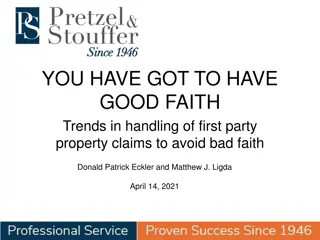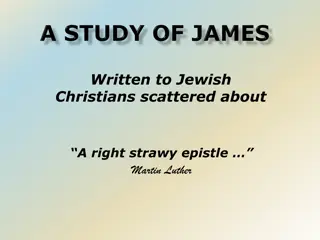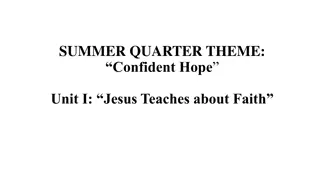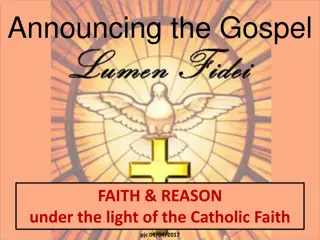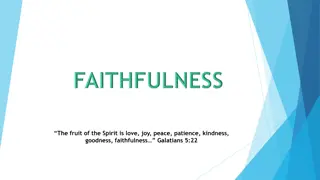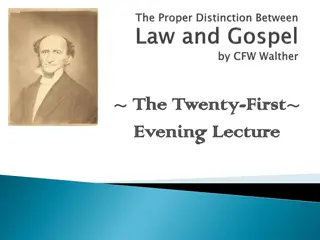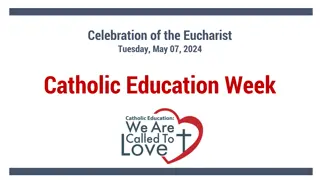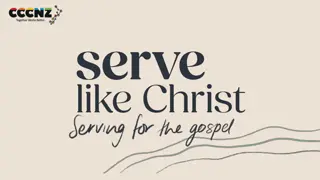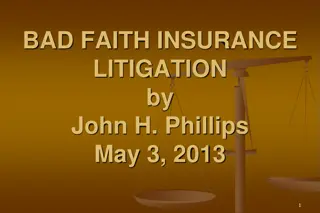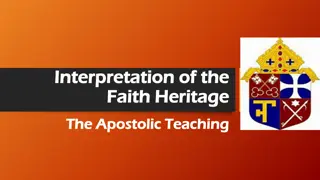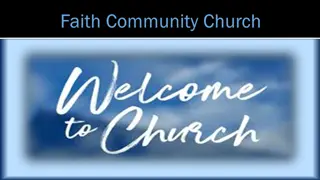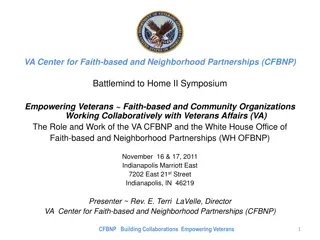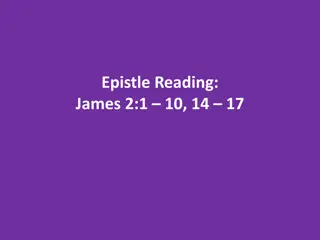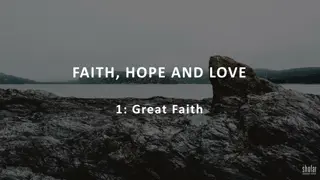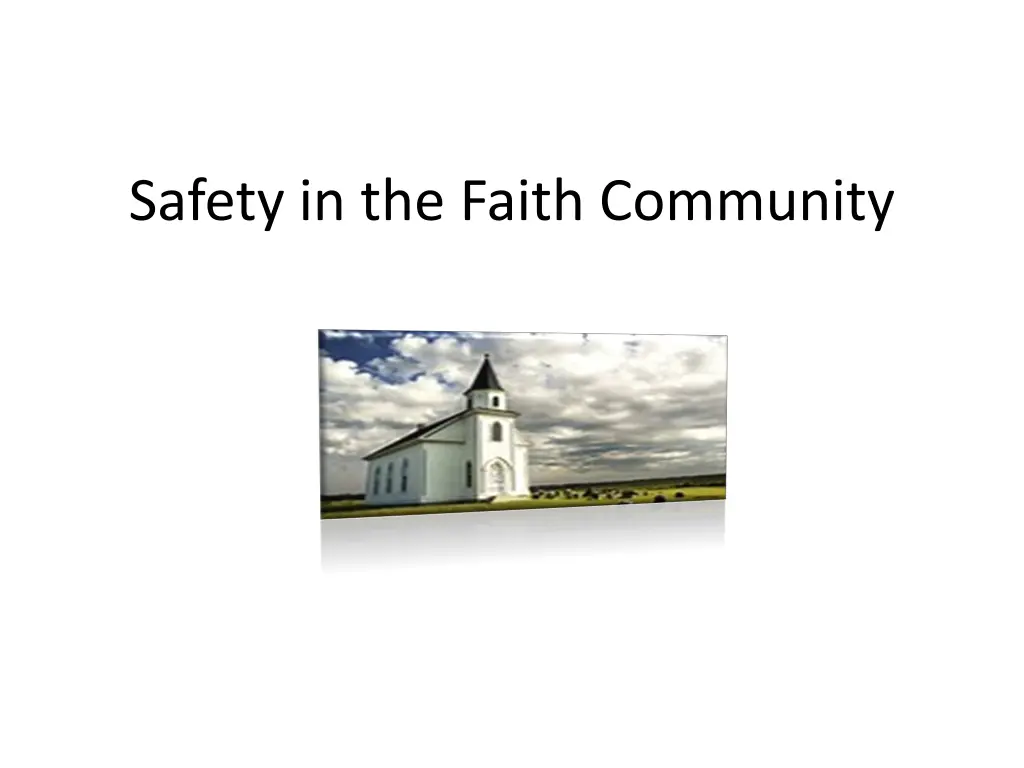
Understanding the Impact of Abuse in Faith Communities
Explore the profound effects of abuse within faith communities, highlighting the tactics used by offenders, physical and emotional impacts, correlation with adverse childhood experiences, and indicators of abuse. Learn how awareness and prevention can mitigate these harmful outcomes.
Download Presentation

Please find below an Image/Link to download the presentation.
The content on the website is provided AS IS for your information and personal use only. It may not be sold, licensed, or shared on other websites without obtaining consent from the author. If you encounter any issues during the download, it is possible that the publisher has removed the file from their server.
You are allowed to download the files provided on this website for personal or commercial use, subject to the condition that they are used lawfully. All files are the property of their respective owners.
The content on the website is provided AS IS for your information and personal use only. It may not be sold, licensed, or shared on other websites without obtaining consent from the author.
E N D
Presentation Transcript
How did we get to this place? Girl with a Question
About Offenders 90% of abuse occurs with someone a child knows/trusts Offenders seek kids who are emotionally needy, traumatized, confused and frightened. In other words, kids who have a hole in their heart.
About Offenders 54.9 % of child molesters offended when another child was present (The Tricky Part, by Martin Moran) 23.9% offended when another adult was present (Underwood, Journal of Research and Treatment) It may be subtle
Physical and Emotional Impacts of Abuse Now over 25 ACE studies (from 1998 to present)
1 or More ACE Increases Risk of Cancer Heart disease STD s Liver disease Smoking Alcohol abuse Obesity Drug dependence IV drug use
More Adverse Childhood Experience Studies o Correlation between obesity and childhood abuse You ve taken away my best coping mechanism.
Emotional Impacts of ACEs Depression Anxiety Disorders Hallucinations Sleep disturbances Memory disturbances Anger problems Domestic violence risk Job problems Relational problems
Polyvictimization Research Nearly 66% of victims exposed to more than one type of victimization, 30% 5 or more types, 10% 11 or more types Polyvictimization more highly related to trauma symptoms than experiencing repeated victimization of a single type
Behaviors Indicating Abuse Unexplained Injuries Changes in behavior or regressive behaviors Changes in eating or sleeping patterns Lack of personal care or hygiene Risk-taking behaviors Inappropriate Sexual behaviors (Safe Horizon, 2014) Showing intensity or frequency of any of these signs Extreme changes in school performance (either negative or positive)
Types of Disclosure Denial of Abuse Tentative Disclosure ( I forgot , I have a friend who , what if ) Active Disclosure (details of abuse) Subtle clues and looking for response/ trust After disclosure, many recant Why??? Often people will rally around offender, blame victim, accuse of lying, etc.
Boys and Disclosure Fewer Boys Disclose Abuse Cultural norms not allowing for boys to be victims Boys should be tough, problem solvers, protectors, etc. Afraid of being labeled ( gay, weak ) Assumptions/jokes Where was I when there were teachers like this? Jay Leno Mickey Mantle, The Last Boy
When a Child Discloses Tell the child you believe her Always attempt to remain calm Listen more than talk Let the child end the conversation if he wants to Tell me about that
Remember Investigating abuse and neglect is not your job Your role is to support the child in whatever way he/she needs Don t underestimate your ability to make a difference!
After Disclosure Tell them they did the right thing Tell the child that you have to tell someone who can help Don t make promises you can t keep! OCS screening line: 1 (800) 478-4444 Valdez Police Department 835-4560
Moral Obligation to Act Silence in the face of evil is itself evil. Not to act is to act. Dietrich Bonhoeffer Why are we silent? Ambiguity Group cohesion Dispersion of responsibility
Returning to our Roots The church was the first institution to provide refuge for abandoned children and the church put pressure on the state to legislate against practices that endangered children, ending in an historic edict by Constantine Dr. Paul Offit (2015)
The Impact of Sexual Abuse on Spirituality One study of 527 CA victims found that these victims had significant spiritual injury These injuries included feelings of guilt, anger, grief, despair, doubt, fear of death and belief that God is unfair However, many victims reported praying more frequently and having a spiritual experience. (Lawson, Child Abuse and Neglect)
Affecting Children and Beyond Even without a perpetrator manipulating a child s faith, The victim s analysis of religious doctrine may cause a block Girl with a question (Age 7) 13 YO girl Why did you wait so long? (1:45- 1:47) Police Officer in the Back of the room
How Often do Offenders Use Religious Cover? 93% of offenders describe themselves as religious. (Abel, study of 3,952 male offenders) Survey of 2,864 church leaders, 20% knew of a sex offender in their church (Christianity Today, 2010) Hard core offenders maintain significant religious involvement, had more convictions, younger victims (Eshuys and Smallbone, 2006)
WHY??? Faith communities provide cheap grace, gullible religious people and easy access to children
How Sex Offenders View Churches I consider church people easy to fool they have a trust that comes from being Christians They tend to be better folks all around. And they seem to want to believe in the good that exists in all people I think they want to believe in people. And because of that, you can easily convince, with our without convincing words.
Church Policies Jacob Wetterling Resource Center Keep Kids Safe tab Personal Safety Online Safety Communities of Faith Trainings? Education for children on abuse prevention? (Safe Children s Act now law) Time length in faith community before volunteering? Designated person to handle reports? Understood that we always report to outside agency (OCS, law enforcement) in addition to reports within church about CA
Screening and Selection Five recommended pre-employment screenings Informing applicant of policies, requiring written acknowledgement and asking questions Written application with questions pertinent to abuse (how they would respond, etc.) Personal interview with additional questions about reporting, etc. Verbal, not just written, references!!!
Background Checks Criminal background checks. But note that most offenders have never been caught (Abel study) Google search where future employees may have worked, search Social media sites, etc.
Monitoring Behavior Two deep leadership No one-on-one contact (keep private discussions in view of others) Respect for privacy and expectation of modesty Should we fire him/her? It wasn t really criminal behavior. They had a good reason. What is best practice? Reporting policy for all church workers (paid and volunteer)
More Policies and Guidelines Separate sleeping accommodations for children and adults? Limit events at workers homes??? Appropriate attire and actions Windows and open doors Sexual jokes, references prohibited Prohibit corporal punishment Watch use of cameras and digital devices
Watching out at Camp or Overnight Activities Does a counselor single out a child for gifts or favors? Do adult leaders find ways to accidentally be where children are dressing Is the child from a divorced, overly chaotic, or uninvolved family? Trust your gut, not excuses .
Look for the Helpers When Mr. Rogers would see something scary on the news as a young boy, he remembers him mom saying, Yes, a lot of bad things happen in the world, but there are always people you can find who are helping. Look for the helpers in this story.
Thank You! Please feel free to contact us with questions, suggestions, etc. (907) 822-3733 director@crbcac.org familyadvocate@crbcac.org preventioncoordinator@crbcac.org

